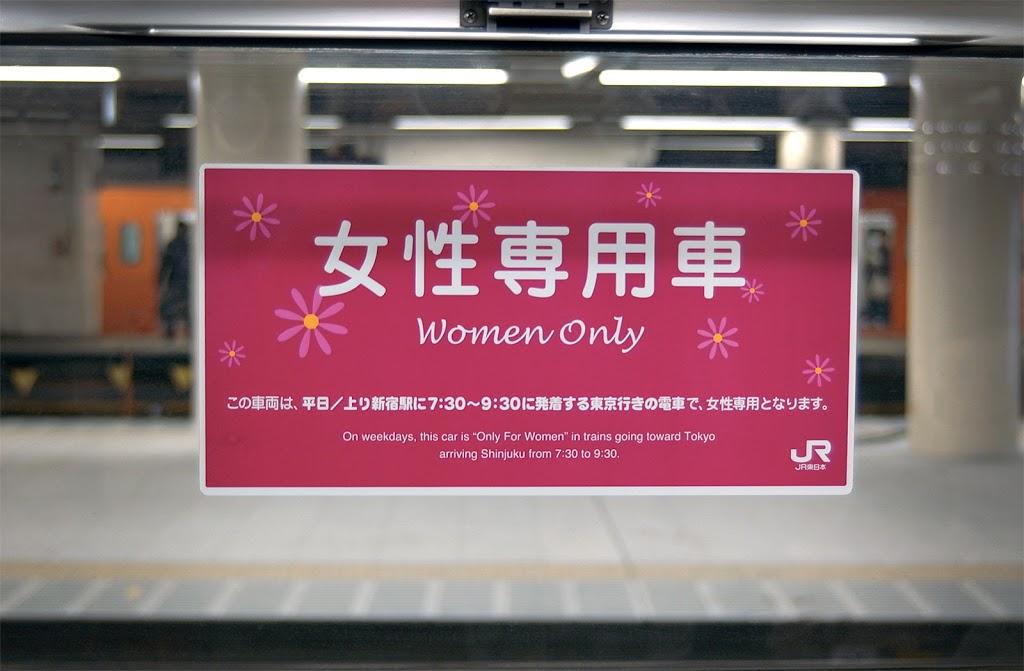
January: 女性専用車
(josei senyosha / women-only cars)
The Japan-America Society of Washington DC would like to wish you a very Happy New Year! This year, we would like to introduce you to words and phrases associated with travel in Japan. This month we will explore some terminology associated with traveling by train.
The phrase of the month is “josei senyō-sha”, which refers to a “women-only car.” In Japan, you may see train cars with bright pink lining, and these cars are only for female passengers. In Japan, women-only cars were introduced to combat lewd conduct, particularly groping, or “chikan.” The policy for women-only cars varies depending on the transportation company; as some are effective during rush hour, others are available throughout the day, and some even limit women-only cars to rapid service trains. But, in general, the policy is only effective on weekdays. Platforms and train doors are marked with signs indicating boarding areas for the cars, and explaining the days and times when the cars are women-only.
The first appearance of women-only cars was on Tokyo’s Chuo Line, back in 1912 when there were separate train cars for male and female students. In 2002, Osaka introduced women-only train cars on their busiest Midosuji Line, and incidents of chikan dropped by an overwhelming 30%, making it a permanent fixture on that route, and countless other rail lines throughout Osaka and the entirety of Japan.
Source(s):
Kittaka, Louise George. “What’s With Women-Only Carriages?” GaijinPot Blog,
blog.gaijinpot.com/whats-with-women-only-carriages/.
Must check - WP faq support by geometricbox
